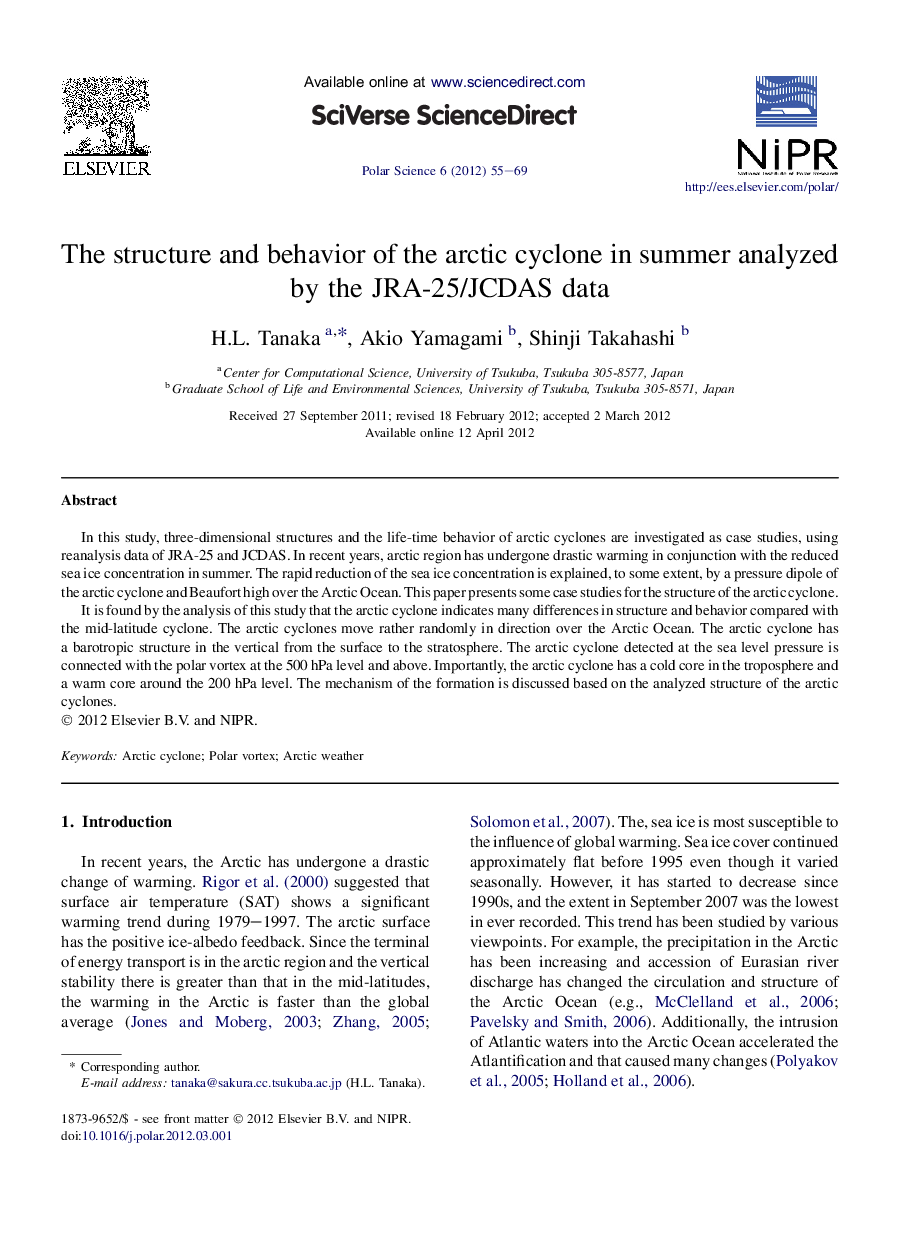| Article ID | Journal | Published Year | Pages | File Type |
|---|---|---|---|---|
| 4683378 | Polar Science | 2012 | 15 Pages |
In this study, three-dimensional structures and the life-time behavior of arctic cyclones are investigated as case studies, using reanalysis data of JRA-25 and JCDAS. In recent years, arctic region has undergone drastic warming in conjunction with the reduced sea ice concentration in summer. The rapid reduction of the sea ice concentration is explained, to some extent, by a pressure dipole of the arctic cyclone and Beaufort high over the Arctic Ocean. This paper presents some case studies for the structure of the arctic cyclone.It is found by the analysis of this study that the arctic cyclone indicates many differences in structure and behavior compared with the mid-latitude cyclone. The arctic cyclones move rather randomly in direction over the Arctic Ocean. The arctic cyclone has a barotropic structure in the vertical from the surface to the stratosphere. The arctic cyclone detected at the sea level pressure is connected with the polar vortex at the 500 hPa level and above. Importantly, the arctic cyclone has a cold core in the troposphere and a warm core around the 200 hPa level. The mechanism of the formation is discussed based on the analyzed structure of the arctic cyclones.
